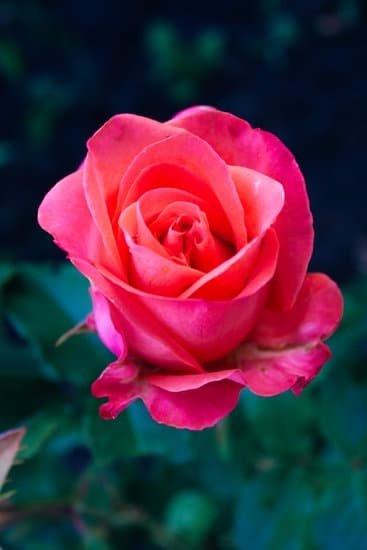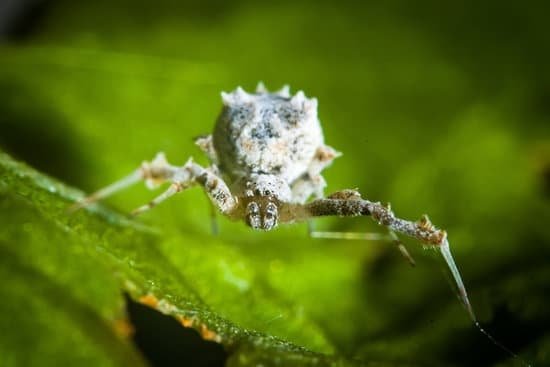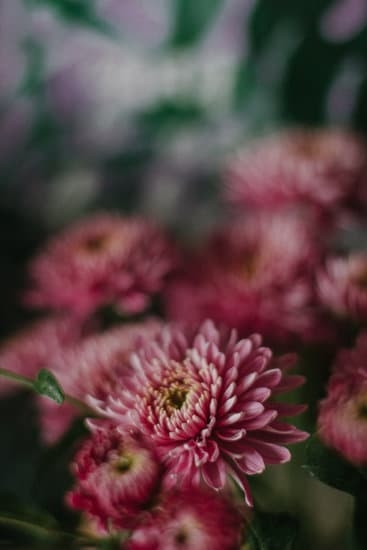Are you looking to liven up your living space with some greenery and fresh produce? If so, then these gardening ideas for home are just what you need. Gardening at home can bring a sense of tranquility, beauty and productivity right to your doorstep.
Whether you have a spacious yard or a small apartment, there are plenty of creative ways to incorporate gardening into your home. From traditional outdoor gardens to innovative indoor setups, there’s something for everyone in this comprehensive guide to home gardening.
When it comes to gardening at home, the possibilities are endless. From selecting the right location and plants for your garden to utilizing small spaces and implementing vertical gardening techniques, there are numerous opportunities to get started on your own garden oasis. With the tips and ideas provided in this article, you’ll be well on your way to transforming your home into a flourishing paradise of greenery and natural beauty.
In the following sections, we’ll explore everything you need to know about creating a successful garden at home. We’ll cover topics such as choosing the right location for your garden, selecting the best plants for indoor gardening, creative DIY container gardening ideas, tips for maintaining a successful indoor garden, incorporating vertical gardening into your home, creating a mini herb garden in your kitchen, utilizing small spaces for indoor gardening, and inspiring garden ideas for small yards and patios.
So roll up your sleeves and get ready to cultivate some green goodness right in the comfort of your own home.
Choosing the Right Location for Your Garden
When it comes to gardening at home, one of the most important factors to consider is choosing the right location for your garden. The success of your indoor garden greatly depends on the amount of sunlight and space available in your chosen location. Here are some key considerations for selecting the perfect spot for your indoor garden:
Assessing Natural Light
The amount of sunlight that enters your chosen location will determine what types of plants you can grow. South-facing windows typically receive the most sunlight, making them ideal for sun-loving plants like herbs and succulents. East and west-facing windows also offer good light for a variety of plants, while north-facing windows may require supplemental lighting for certain species.
Considering Space Constraints
Before setting up your indoor garden, think about how much space you have to work with. If you’re limited on floor space, consider using hanging planters or wall-mounted containers to maximize vertical space. For smaller areas, compact and dwarf varieties of plants are great choices for maximizing limited space while still enjoying a diverse garden.
Avoiding Drafts and Temperature Extremes
Plants grown indoors are generally more sensitive to temperature fluctuations compared to outdoor gardens. To ensure the health and longevity of your indoor garden, select a location that is protected from drafts and extremes in temperature. Avoid placing plants near heating or cooling vents as well as drafty windows or doors.
By carefully considering these factors when choosing the right location for your indoor garden, you can create an optimal environment for your plants to thrive and flourish. With these gardening ideas for home in mind, you’ll be well on your way to enjoying a successful and beautiful indoor garden all year round.
The Best Plants for Indoor Gardening
When it comes to indoor gardening, choosing the right plants is essential for success. Not all plants thrive indoors, so it’s important to select ones that are well-suited for an indoor environment.
Some of the best plants for indoor gardening include herbs like basil, mint, and rosemary, as well as low-maintenance succulents such as aloe vera and snake plant. These plants not only add greenery to your home but also provide practical benefits such as fresh herbs for cooking or air purification.
Another great option for indoor gardening is flowering plants like orchids, African violets, and peace lilies. These plants add beauty and color to any indoor space and can brighten up even the dreariest of rooms. It’s important to consider factors such as light levels, humidity, and temperature when choosing the right plants for your indoor garden. Understanding the specific needs of each type of plant will help ensure they thrive in their indoor environment.
In addition to traditional potted plants, terrariums and air plants are also popular choices for indoor gardening. Terrariums create a miniature ecosystem within a sealed glass container, while air plants are low-maintenance varieties that don’t require soil to grow. Both options allow for creative expression and can be visually stunning additions to any home. With careful consideration and thoughtful planning, you can create a thriving indoor garden that brings joy and natural beauty into your living space.
| Indoor Plants | Benefits |
|---|---|
| Herbs (basil, mint, rosemary) | Provide fresh herbs for cooking |
| Succulents (aloe vera, snake plant) | Low-maintenance and air-purifying |
| Flowering Plants (orchids, African violets, peace lilies) | Add beauty and color to indoor spaces |
Creative DIY Container Gardening Ideas
Container gardening is a great way to add greenery and floral beauty to your home, especially if you have limited outdoor space. With some creativity and the right resources, you can easily create a stunning container garden that will brighten up any corner of your home.
Repurposed Containers
One creative DIY container gardening idea is to repurpose old containers for use as planters. An old boot, a vintage teacup, or even a wooden crate can become unique and charming homes for your plants. Not only does this add personality to your garden, but it also helps reduce waste and gives new life to old items.
Vertical Gardens
If space is limited, consider creating a vertical garden using containers mounted on walls or fences. This not only maximizes space but also creates a striking visual effect. You can use a variety of containers such as wall-mounted shelves, hanging baskets, or even repurposed pallets to create a vertical garden that suits your style and space.
Layered Planters
Another fun DIY container gardening idea is to create layered planters using different-sized pots or containers. By arranging them in tiers, you can fit more plants into a smaller space while adding visual interest to your indoor or outdoor garden. This technique works well with cascading plants that spill over the edges of the containers, creating lush layers of foliage.
Using these creative DIY container gardening ideas for home can help add color and life to any space, no matter how small. Whether you’re working with repurposed containers, creating vertical gardens, or experimenting with layered planters, there are endless possibilities for bringing the beauty of nature indoors through container gardening.
Tips for Maintaining a Successful Indoor Garden
Maintaining a successful indoor garden requires dedication and the right set of skills. It’s not just about picking the right plants and containers; it’s also about ensuring that your garden thrives for the long term. Here are some essential tips to help you maintain a flourishing indoor garden:
1. Regular watering: One of the most important aspects of maintaining an indoor garden is to ensure that your plants are receiving the right amount of water. Be mindful of each plant’s specific watering needs, as overwatering or underwatering can both be detrimental to their health.
2. Proper lighting: Adequate light is crucial for indoor gardening success. Consider placing your indoor garden near a window where it can receive natural sunlight, or invest in grow lights to provide enough light for your plants to thrive.
3. Soil maintenance: Keep an eye on the soil’s moisture levels, and make sure to regularly check for pests or diseases. It’s also important to refresh the soil periodically by adding organic matter or fertilizer to replenish nutrients for your plants.
4. Pruning and grooming: Regularly prune and groom your plants to promote healthy growth and prevent overcrowding. Removing dead or yellowing leaves can also help improve air circulation around the plants.
5. Monitoring temperature and humidity: Indoor environments can fluctuate in temperature and humidity, so it’s essential to keep an eye on these factors and make adjustments if necessary to ensure optimal growing conditions for your plants.
By following these tips, you can ensure that your indoor garden remains healthy and vibrant, bringing joy and tranquility into your home all year round.
For more gardening ideas for home, including inspiration for small yards and patios, check out our other articles on maximizing outdoor spaces with beautiful greenery.
Incorporating Vertical Gardening Into Your Home
Have you ever thought about incorporating vertical gardening into your home? Vertical gardening is a great way to maximize space and add a touch of greenery to your living space. Whether you have limited outdoor space or simply want to bring the beauty of the outdoors inside, vertical gardening can be a fun and creative way to elevate your home’s aesthetic. Below are some ideas for incorporating vertical gardening into your home.
1. Hanging Planters: Utilizing hanging planters is a simple yet effective way to add some greenery to your home. You can hang them from the ceiling, on walls, or even from a curtain rod. Consider using macrame hangers for a bohemian look or opt for sleek metal planters for a modern touch.
2. Wall-Mounted Gardens: Create a statement piece in your home with a wall-mounted garden. There are plenty of modular systems available that allow you to design and arrange your own living wall. This is perfect for growing herbs, succulents, or small flowering plants.
3. Trellis and Climbing Plants: If you have outdoor space like a balcony or patio, consider installing trellises to support climbing plants such as vines, jasmine, or ivy. Not only does this add visual interest, but it also provides shade and privacy.
Incorporating vertical gardening into your home is not only visually appealing but also has numerous benefits such as improved air quality and reduced stress levels. Get creative with how you incorporate these ideas into your own space.
How to Create a Mini Herb Garden in Your Kitchen
Creating a mini herb garden in your kitchen is a great way to add fresh flavors to your cooking while also bringing a touch of greenery into your home. Whether you have a spacious kitchen or limited space, there are various creative ways to incorporate a mini herb garden into your culinary space.
One popular method for creating a mini herb garden in the kitchen is by using vertical planters or hanging baskets. These options are perfect for small kitchens with limited counter or floor space. You can easily install these planters on the wall or hang them from the ceiling, allowing you to grow an assortment of herbs without taking up valuable space.
Another idea for creating a mini herb garden in your kitchen is to use windowsill planters. If you have a sunny windowsill, it can serve as the perfect spot for growing herbs like basil, thyme, and rosemary. Not only does this allow easy access to fresh herbs while cooking, but it also adds natural beauty and fragrance to your kitchen.
For those with even less space, consider using magnetic containers on the refrigerator or a pegboard with hanging pots. These creative solutions not only maximize space but also add an element of visual interest to your kitchen decor.
| Gardening Ideas for Home | Mini Herb Garden in Your Kitchen |
|---|---|
| Vertical planters or hanging baskets | Perfect for small kitchens |
| Windowsill planters | Ideal for growing basil, thyme, and rosemary |
| Magnetic containers on the refrigerator or pegboard with hanging pots | Makes use of limited space and adds visual interest |
Utilizing Small Spaces for Indoor Gardening
When it comes to gardening ideas for home, utilizing small spaces for indoor gardening can be a rewarding and fulfilling endeavor. Whether you live in a cozy apartment or have limited outdoor space, there are numerous creative ways to incorporate greenery into your living environment. One of the key considerations when working with small spaces is to maximize the available area without compromising on style or functionality.
One effective way to utilize small spaces for indoor gardening is to implement vertical gardening techniques. Vertical gardening allows you to make use of walls, fences, or even hanging planters to create a lush and beautiful display of plants without taking up valuable floor space. Additionally, incorporating tiered shelving or plant stands can help make the most of vertical space and provide ample room for your indoor garden.
Another clever approach for utilizing small spaces for indoor gardening is to explore the concept of container gardening. By using pots, containers, or even repurposed items such as mason jars or old crates, you can create a charming and practical garden within limited space. This method not only adds visual interest to your home but also offers flexibility in terms of mobility and arrangement.
In addition to vertical and container gardening, maximizing natural light is essential when utilizing small spaces for indoor gardening. In smaller areas, it’s important to place your plants in locations that receive adequate sunlight throughout the day. Consider positioning your indoor garden near windows or sources of natural light to ensure that your plants thrive and flourish.
10 Inspiring Garden Ideas for Small Yards and Patios
Small yards and patios can still be a great space for gardening, with the right ideas and creativity. Whether you have limited outdoor space or are looking to bring the beauty of gardening to your patio, there are numerous inspiring ideas to consider. Here are some gardening ideas for home that will help you make the most of your small yard or patio.
One idea for small yards and patios is to utilize vertical gardening. This approach involves growing plants upwards using structures like trellises, hanging baskets, or wall-mounted planters. Vertical gardening not only maximizes space but also adds visual interest to your outdoor area. Consider growing climbing plants such as ivy, jasmine, or even small vegetables like cherry tomatoes in this manner.
Another creative idea for small outdoor spaces is to create a container garden. By choosing the right containers and utilizing different heights, you can grow a variety of plants in a compact area. Mix and match different types of plants, such as herbs, flowers, and succulents, to create a visually appealing and diverse mini garden on your patio or in your small yard.
For those with limited outdoor space, consider incorporating raised beds into your gardening plans. Raised beds not only help define separate planting areas but also provide better drainage and soil quality for your plants. You can tailor the size and shape of raised beds to fit your available space, making them an ideal option for small yards and patios.
With these inspiring garden ideas for small yards and patios in mind, you can transform even the tiniest outdoor space into a beautiful and productive garden area. By maximizing vertical space, utilizing containers creatively, and incorporating raised beds where possible, you can enjoy all the benefits of home gardening in any outdoor setting.
Conclusion
In conclusion, home gardening is a wonderful way to bring the beauty of the outdoors inside. Whether you have a small apartment or a spacious house, there are plenty of creative gardening ideas for home that can help brighten up your living space and improve your overall well-being. From setting up a mini herb garden in your kitchen to utilizing vertical gardening techniques, there are countless ways to incorporate greenery into your indoor environment.
One of the key factors for successful indoor gardening is choosing the right location for your plants. By considering factors such as sunlight exposure and room temperature, you can create an ideal growing environment for your favorite plants. Additionally, selecting the best plants for indoor gardening and learning how to maintain them properly will help ensure their long-term health and vitality.
With a little creativity and resourcefulness, anyone can find space for indoor gardening in their home. From DIY container gardening projects to maximizing small outdoor areas like yards and patios, there are endless possibilities for bringing the joy of gardening into your living space. So whether you’re a seasoned gardener or just starting out, consider exploring some of these inspiring gardening ideas for home to create a more vibrant and inviting atmosphere in your home.
Frequently Asked Questions
How Do I Plan My Garden Layout?
Planning a garden layout involves considering factors such as sunlight, water access, and the types of plants you want to grow. It’s important to sketch out the space and determine where each plant will go to optimize growth.
What Is a Good Layout for a Vegetable Garden?
A good layout for a vegetable garden typically includes raised beds or rows that allow for easy access and maintenance. Grouping vegetables with similar water and sunlight needs together can also help with efficient gardening.
What Is an Easy Vegetable Gardening Idea?
An easy vegetable gardening idea is to start small with container gardening. Herbs, tomatoes, peppers, and lettuce can all thrive in containers on a patio or balcony with minimal effort. Container gardening also allows for flexibility in moving plants if needed.

Welcome to my gardening blog! I am passionate about plants and enjoy sharing my knowledge and experiences with others. In this blog, I will write about everything related to gardening, from tips on how to get started to updates on my own garden projects.





